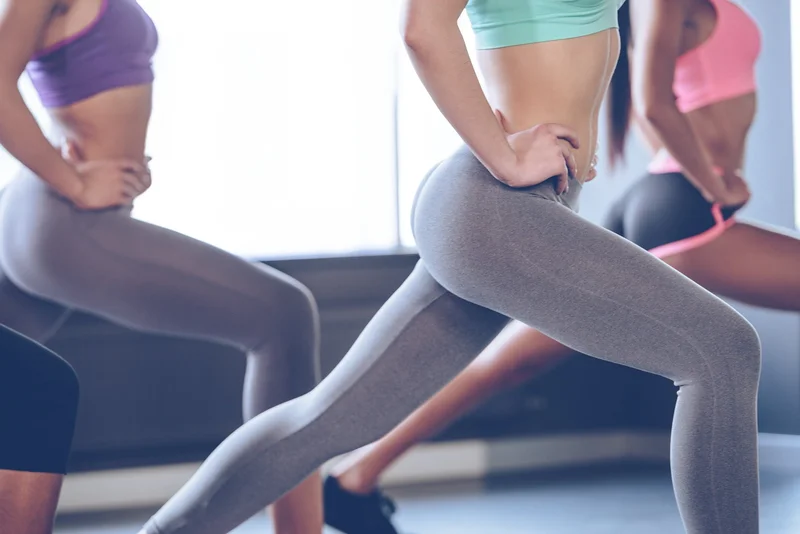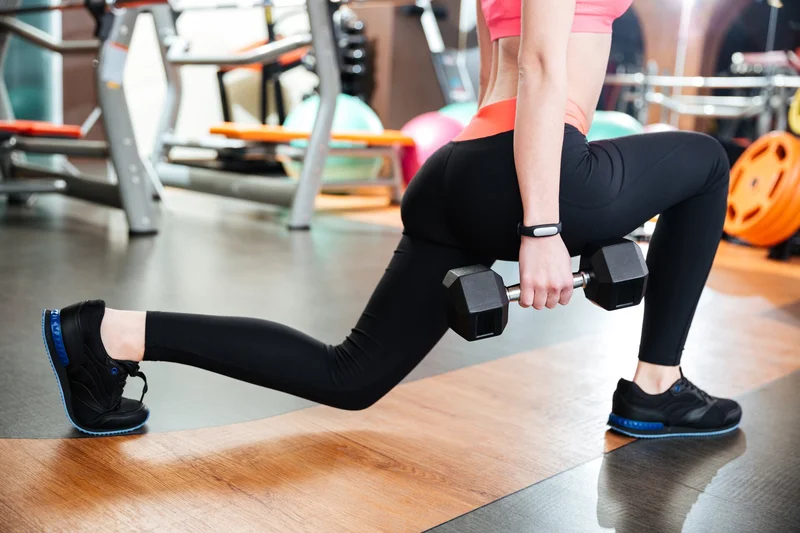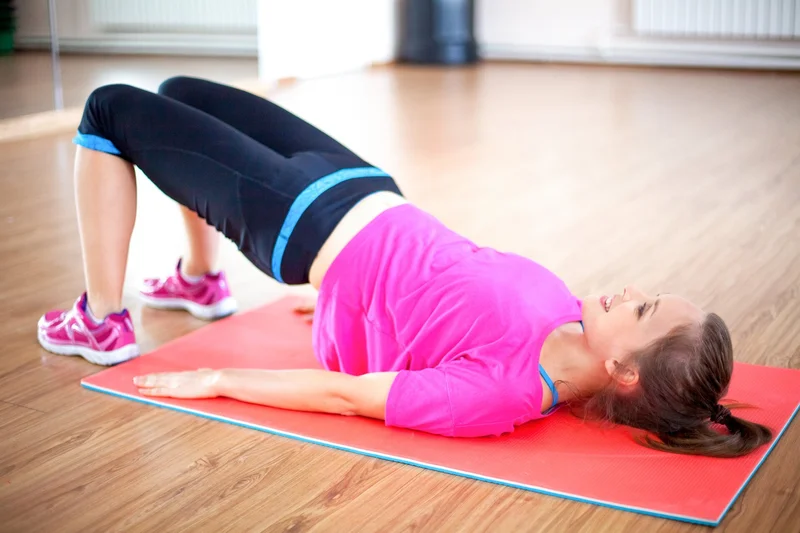Perfect buttocks: how to pump up, effective exercises and basic mistakes

Photo source: 123rf.com
Experts told us how to pump up the buttocks and selected a universal program for working this muscle group.
The gluteal muscles play an important role in maintaining a healthy and beautiful body. They help not only with exercise, but also with everyday movements such as climbing stairs or walking. INC-News.ru correspondents talked with experts about training secrets, mistakes and exercises that can be done both at home and in the gym.
“To begin with, you need to understand that the gluteal muscles consist of three main muscle groups: the gluteus maximus, medius and minimus. To effectively pump up the buttocks, you need to work with all three muscle groups,” notes Igor Savin, an active trainer and teacher of strength and conditioning. personal directions.
Where to start - diving into training or following a plan?
The training process for working out the gluteal muscles should be approached thoroughly, taking into account general physical preparation and planning, and both of these factors will accompany each other.
To pump up your buttocks, you need to start by drawing up an effective training plan and follow certain principles.
"To create a plan, decide on the number of workouts per week. Regularity is key. If you exercise infrequently, results will be achieved more slowly. It is optimal to train the buttocks at least 2-3 times a week. Develop a plan that includes exercises for the buttocks and legs, but Don't forget about other areas of the body. A variety of exercises is important for balanced muscle development and joint health," advises Sky Fitness personal trainer Konstantin Gevurkov.
In addition, it is equally important to stretch your entire body before training to prepare your muscles and avoid sprains and injuries.
If you have little experience in fitness, then you should start pumping your muscles with simple exercises. Gradually you can increase the load and change the intensity of the workout.
Photo source: 123rf.com
When can I expect results?
There is, of course, no universal answer to this question. Because it will depend on your level of training, endurance, as well as initial data.
“Let’s say, if you are pursuing the goal of not only pumping up a “butt like Kim’s,” but also losing weight, then this can take quite a lot of time. Plus, this already involves a complete change in your usual lifestyle, working on nutrition and developing the right habits: drink a lot of fluids, move more, give up some foods. In general, the first results will be visible after the first regular workouts. Gradually, you will feel how the muscles of the buttocks become more elastic and toned," notes Valeria Andreeva, representative of the Proxima Fitness brand, international master of sports in athletics.
At the same time, Savin Igor says that with regular and fairly intense training with the correct technique of performing exercises, performed 2-3 times a week, the first visible results for others will only be after a month or two, but there will be a significant increase in volume and strengthening of the gluteal muscles should be expected only after three months of regular training.
What do you need besides training for a beautiful butt?
Of course, in order to give an appetizing shape to your buttocks, you cannot do without sports. However, there are several life hacks that can highlight them at the initial stage. Valeria Andreeva shared her tricks.
Let's start with nutrition. Many people mistakenly believe that in order to make their buttocks bigger, they can uncontrollably eat sweets or fatty foods. But all this will soon end up on your thighs, and the appearance of your buttocks will only worsen. The list of products for a balanced diet and maintaining the elasticity and beauty of the buttocks: beef or veal, boiled eggs, lean fish, poultry fillet, dairy products and all types of legumes. Cereals and brown rice dishes will also come to the rescue as a source of carbohydrates, and nuts as a source of fat.
Photo source: 123rf.com
Work on your gait. Imitating a “cat walk” will not only highlight this part of the body, but will also make you more confident and attractive in general.
Linen. Properly selected shapewear (shaping) underwear and jeans will also work to your advantage.
What are the main mistakes when training the buttocks?
If you are faced with the task of starting gluteal muscles, you need specific training. That is, you need to do exercises for specific muscles, and not run, swim, do yoga and other activities. Maria Sidorova, a master fitness and bodybuilding trainer with a specialization in gluteal hypertrophy, notes that a clear goal and consistency will help you avoid these basic mistakes when working on your butt:
1. Do exercises only on the gluteus maximus muscle, forgetting the rest. Each muscle has its own specific exercises.
2. Perform only complex multi-joint exercises. If you use too much weight in the glute bridge exercise, you will not be able to do it with good range of motion and technique. Consequently, the effect of the exercise will be minimal.
3. Incorrectly selected exercises. For example, in hyperextension, no matter how you position your legs and body, the target muscle will never be the glutes. Yes, they bear the load, but not the main one.
4. Deliberate reduction in the amplitude of the exercise (short and incomplete movements). Typically, such athletes say that they feel their muscles better in this format. But the sensation of a muscle is far from a sign of its effective functioning.
“The correct technique will help you avoid injury and maximize results. I recommend taking a few personal training sessions to hone your technique. Then you can practice on your own,” advises Konstantin Gevurkov, personal trainer at Sky Fitness.
Photo source: katemangostar on Freepik
TOP-5 exercises for creating elastic buttocks from the trainer-methodologist "Physical Culture and Sports", University. Lobachevsky Andrey Nagibin
1. Squats are a basic exercise and one of the most effective for the buttocks. Stand straight, feet shoulder-width apart. Slowly lower yourself down, bending your knees, and move your pelvis back so that your thighs are parallel to the floor. Then return to the starting position. You can complicate the exercise and straighten with a jump or stay in the lower position for 2-3 seconds. Use weights, water bottles, or bands to increase the intensity. Perform 8-12 times with weights and 12-20 times with your own body, perform 4-5 approaches, try to achieve a slight burning sensation in the buttocks;
2. Lunges. From a shoulder-width position, take a wide step forward/or backward/or to the side with one leg, lowering your pelvis to the point where both legs are bent at right angles. Then return to the starting position and repeat with the other leg. This exercise activates the gluteal muscles and thighs. Use all the variability in performing this exercise by alternating forward/backward and side lunges in different workouts.
3. Gluteal bridge. One of the most effective and favorite "women's" exercises. Lie on your back, bend your knees and place your feet on the floor. Then lift your pelvis up, creating a straight line from your shoulders to your knees. Hold at the top for a few seconds, then slowly lower to the starting position. This exercise specifically works the gluteal muscles. You can complicate the exercise by adding weights to the lower abdomen or straightening one leg up and forward so that one leg is lifted off the floor and the buttocks are lifted by one leg.
4. Taking the leg back (swinging the leg back while standing), this is an isolating exercise designed to work the gluteal muscles of the thigh. The main load is received by the gluteal muscles, the biceps femoris muscles are also included in the work, and the core muscles provide stabilization of the torso.
Pulling the leg back is performed both vertically and with support on the knees and hands. Stand up straight, grab a chair and take your leg, slightly bent at the knee, back to the level of your buttocks and slowly return. Perform 10-15 times and change legs.
Also, this exercise is performed from a kneeling position with support on your hands. Straighten your leg back to the level of your body and slowly return to the starting position.
5. The chair is a static exercise that develops the front of the thigh, biceps hamstrings and our favorite gluteus maximus muscle. Performed with your back supported against a wall. Go to the wall, press your back, take a step forward keeping your back in contact with the wall, squat to a 90-degree angle and hold in this position. Try to stay at the bottom point as long as possible, perform 3-4 approaches.
Of course, these are not all exercises for developing the gluteal muscles. Also effective are stepping onto a cabinet/table or simply walking up the stairs. Hiking, cycling, running - all contribute to the development of beautiful and strong buttocks.
“The key to success is consistency. To maintain your motivation and exercise regularly, it is best to do it with like-minded people,” emphasizes Andrei Nagibin, leader of the “Street Athletics” sports movement.